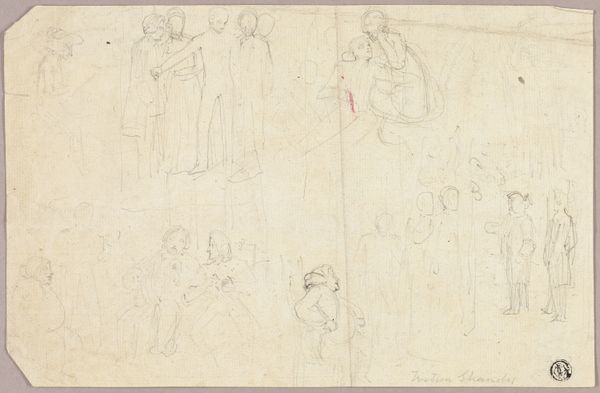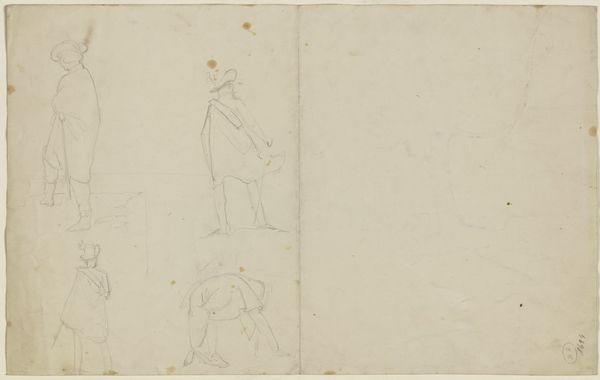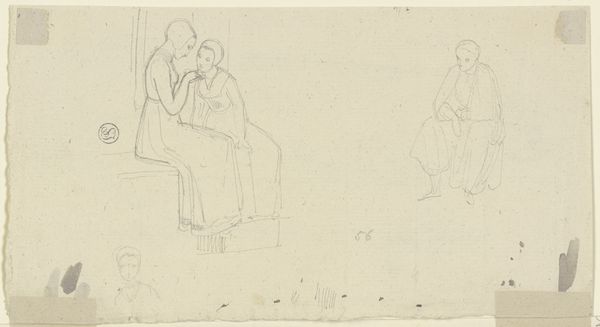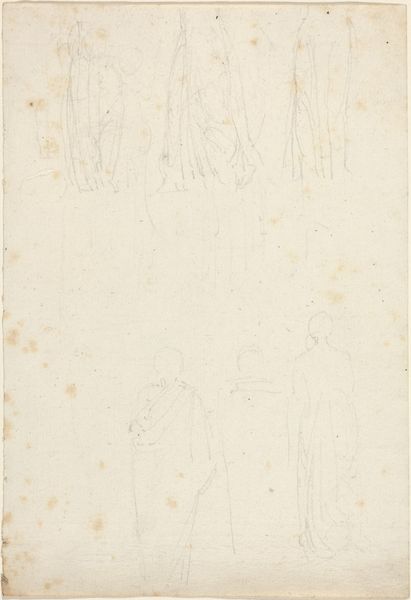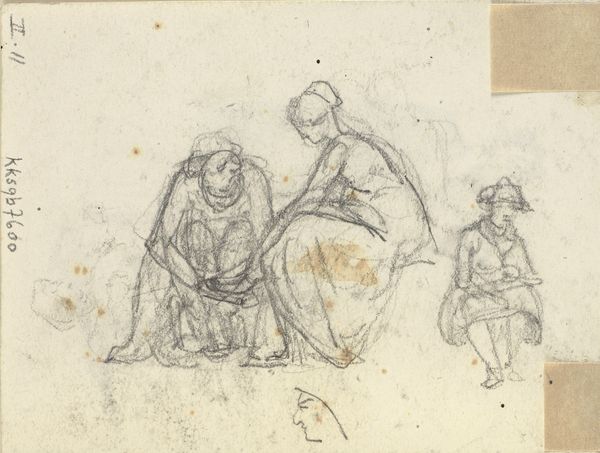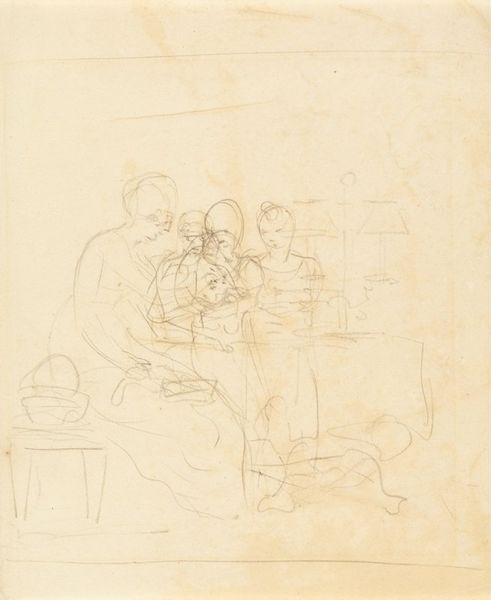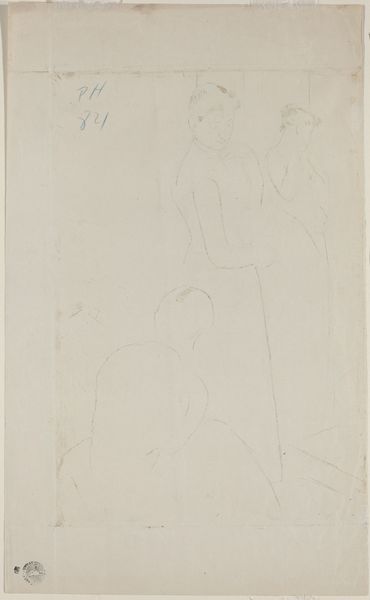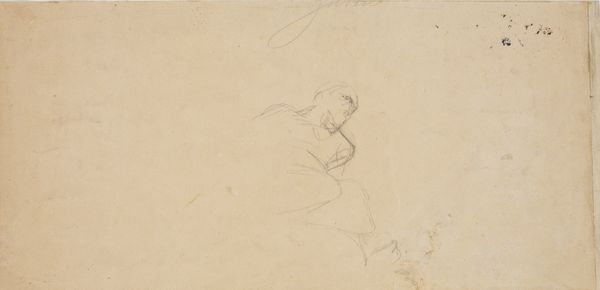
drawing, paper, pencil
#
drawing
#
figuration
#
paper
#
pencil
Dimensions: overall (approximate): 10 x 12.7 cm (3 15/16 x 5 in.)
Copyright: National Gallery of Art: CC0 1.0
This small pencil sketch of two groups of figures was made by John Flaxman, a British artist active in the late 18th and early 19th centuries. Executed on paper, the artist uses a readily available material and a simple medium to explore the human form. There’s an incredible economy of means here: just a few lines are enough to suggest figures in various poses. In the group on the left, one seems to be reaching out to another, while the group on the right sits in a more huddled position. Flaxman was deeply involved in the Neoclassical style, which drew inspiration from classical antiquity, often emphasizing purity of line and form. The sketch exemplifies these characteristics, reducing human figures to their most basic forms while still conveying a sense of emotional depth. The ease and speed of drawing allowed Flaxman to quickly capture his ideas, and the work reminds us of the foundational importance of drawing in the history of art. It also challenges us to consider the value we place on labor and skill, especially when embodied in something as seemingly simple as a pencil sketch.
Comments
No comments
Be the first to comment and join the conversation on the ultimate creative platform.

